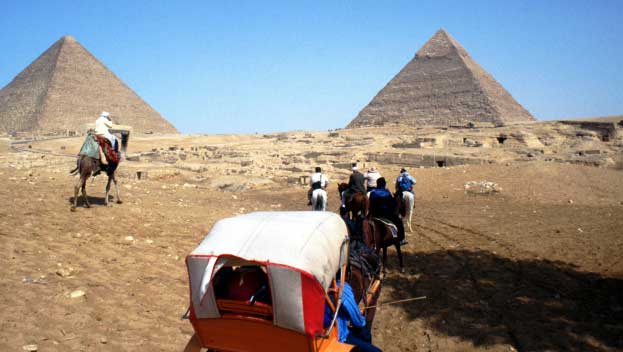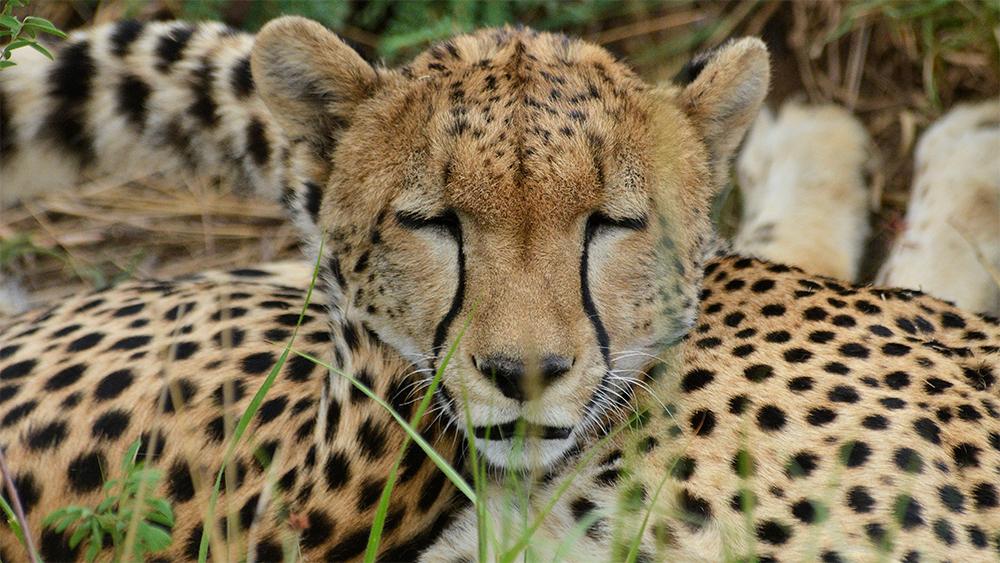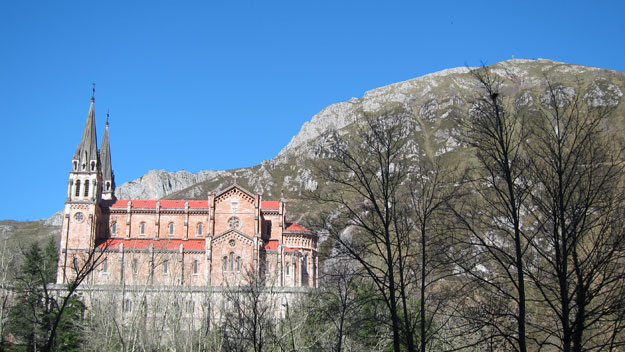Wedged between mainland Egypt and Saudi Arabia, the Sinai is a triangle of rocky desert surrounded by the gin-clear water and coral reefs of the Red Sea. Its desert heartland was once the setting of epic biblical events, whereas its shimmering shores offer one of the world’s most spectacular marine environments. Not surprisingly, it attracts two different types of tourist – pilgrims and watersport enthusiasts.
Pilgrims and their sacred sights
Pilgrims come in search of biblical landmarks such as Mount Sinai, where Moses is said to have received the 10 Commandments. Mount Sinai may not be a very beautiful mountain, but that’s missing the point. Visitors flock here to walk in the footsteps of one of the Bible’s great prophets and not to soak up the scenery.
Then, there are the monasteries – three in all, dedicated to St Catherine, St Paul and St Peter. On my guided tour around St Catherine’s Monastery the biblical experience came sharply into focus.
“This is where Moses found the burning bush,” said the guide. “See the vine over there on the wall, that’s taken from the bush of Moses.”
This was delivered with such conviction all I could think of was Moses getting his fingers burnt as he took a cutting that grew into today’s bush. Of course, everyone knows Moses didn’t take a cutting. And, of course, no one knows where Moses found the original bush, but a place was found to satisfy people’s need for one. After all, pilgrims, ancient and modern, need sacred sites if they are to make their pilgrimages.
This particular site was selected by the Byzantine Empress Helena in 337AD, who built a chapel to mark the spot. The fact that the bush at St Catherine’s was planted at least 1500 years after Moses passed by has been conveniently overlooked.
And so it should be. What’s the point of visiting the Sinai unless you’re willing to suspend scepticism and imagine Old Testament legends unfolding in their original setting? After all, there’s little else to get excited about … except rock and sand.
The biblical hot spots
Mount Sinai: On top of this unassuming 2288m uplift stands the granite peak of Jebel Musa, the alleged spot where Moses received the tablets from God. It’s a long haul on a rock-strewn path to the summit and the view from the top is disappointing. But according the Bible, the Ark of the Covenant was once kept here.
St Catherine’s Monastery: Nestling at the foot of Mount Sinai, this Greek Orthodox monastery is thought to be the oldest continuously inhabited Christian establishment in the world. It’s a beautiful collection of buildings with a superb collection of 2000 icons, including one of St Peter. There’s also a bell tower donated by a Russian Tsar, an evergreen shrub that’s supposed to be an off-shoot of the original burning bush, a charnel house full of monk’s skulls, the “Well of Moses” and a mosque, built in 1106AD, when religious tolerance was the order of the day. All this surrounded by towering defensive walls that date back to the sixth century.
Divers and their aquarium
Moses may have parted the Red Sea, but modern-day visitors prefer to take a dive in it. From the shore it looks quite tame, but underneath there’s a kaleidoscopic wonderland of reefs, shoals of multicoloured fish, sheer drop-offs that descend to unknown depths and coral-encrusted shipwrecks. Put simply, the Red Sea is a diver’s paradise.
Here, you’ll find more than 1000 species of marine life, including a bewildering variety of fish, reef sharks, stingrays, turtles, dolphins, colourful corals, sponges, sea cucumbers and a multitude of molluscs.
In 1989, a panel of leading marine scientists chose the Sinai section of the Red Sea as one of the Seven Underwater Wonders of the World. This accolade launched a development boom that has turned the coastline into a glittering strip of resorts, five-star hotels and holiday homes. The little fishing port of Sharm el-Sheik now stretches for 20km along the coast. Thankfully, national parks and marine reserves now protect the best areas.
The hottest diving spots
Ras Mohammed: Close to the resort town of Sharm el-Sheik on the southern tip of the Sinai Peninsula, this diving area is in a national marine park of the same name. It’s often called the jewel in the crown of the Red Sea and has more than 20 prime dive sites, including The Thistlegorm, a prized shipwreck discovered by Jacques Cousteau.
Dabah: North of the Straits of Tiran on the Gulf of Aqabar, this cluster of diving areas are centred around two marine reserves. Some of them should only be visited by experienced divers, especially the 80metre-deep Blue Hole and Canyon. More accessible dive sites for beginners are the Eel Garden, Bridge and Oasis.
* Avoid the resorts of Hurghada and Safaga on the Red Sea coast of the Egyptian mainland. The reefs here have been trashed by unfettered tourist development.


